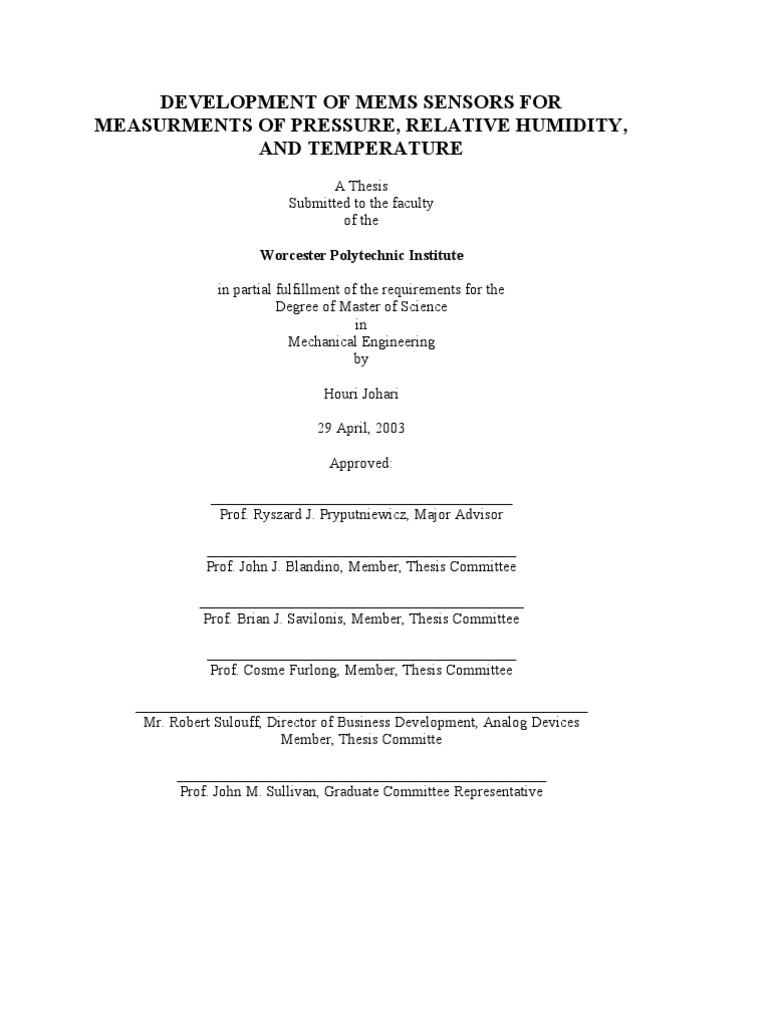The evolution of microelectromechanical systems (MEMS) has catalyzed unparalleled advancements across various fields including telecommunications, automotive, healthcare, and environmental monitoring. As potential doctoral candidates embark on the journey to explore this fascinating domain, the selection of a pertinent research topic is of paramount importance. This discourse delineates various compelling areas within MEMS that warrant scholarly investigation and emphasizes what prospective Ph.D. candidates can expect.
1. MEMS Sensors and Actuators
The development of MEMS sensors and actuators represents a prolific avenue for research, notably due to their extensive applicability. MEMS accelerometers and gyroscopes are already utilized in consumer electronics, automotive safety systems, and aerospace applications. However, future advancements could explore novel materials such as graphene or advanced polymers to enhance sensitivity and energy efficiency. Research could focus on developing ultra-sensitive sensors that respond to minute environmental changes, or adaptable actuators capable of multifunctional tasks: this might include applications in robotics or smart prosthetics.
Moreover, integrating these sensors with artificial intelligence algorithms for predictive analytics could exponentially increase their utility. The intersection of MEMS technology and deep learning presents a fertile ground for innovation, enabling smart environments that react dynamically to human presence and activity.
2. MEMS for Biomedical Applications
Biomedical applications of MEMS technology have gained momentum, particularly in diagnostics, drug delivery, and personalized medicine. MEMS-based lab-on-a-chip technology allows for miniaturized and highly efficient biochemical assays, thus paving the way for portable diagnostic devices that operate at the point of care. This area of research promises a contribution to the reduction of healthcare costs and increased accessibility to medical services.
Potential topics within this realm include the design of MEMS devices for targeted drug delivery systems, employing microfluidics to achieve controlled and localized treatment. The application of MEMS in biosensors that continuously monitor on-body health metrics is another forward-looking area. Such innovation could lead to breakthroughs in the management of chronic illnesses like diabetes or cardiac-related conditions, where real-time data transforms patient care.
3. Energy Harvesting via MEMS
The pursuit of sustainable energy solutions has catalyzed interest in MEMS energy harvesting devices. Research exploring the conversion of ambient vibrations, thermal gradients, or electromagnetic fields into usable electrical energy is increasingly relevant. This field presents opportunities for innovation in powering IoT devices in remote locations, where battery replacement is impractical.
Investigation into the optimization of piezoelectric materials or the development of triboelectric nanogenerators can serve as fertile research foci. The exploration of hybrid systems combining various energy harvesting techniques could potentially yield devices with comprehensive power output profiles, thus addressing diverse energy demands.
4. MEMS in Environmental Sensing
Environmental monitoring is another pivotal application of MEMS technology, providing crucial data for climate science and pollution control. MEMS devices can detect volatile organic compounds (VOCs) and particulate matter, offering a solution for real-time air quality monitoring. The research could involve developing sensors that not only detect these pollutants but also classify and quantify them, thereby enhancing environmental control measures.
Further exploration could focus on integrating MEMS with wireless sensor networks, creating vast arrays of interconnected monitors to provide a comprehensive view of ecological health. Investigating the scalability of such systems and their integration with cloud computing analytics tools can represent a significant contribution to environmental science.
5. MEMS Manufacturing and Materials Innovation
The fabrication processes of MEMS devices itself is a domain ripe for research. Innovations in materials science, particularly the exploration of biocompatible or biodegradable materials, can revolutionize production methodologies. As the demand for more intricate MEMS devices increases, the development of advanced lithography techniques or additive manufacturing processes may become paramount.
Additionally, addressing scalability and cost-efficiency in MEMS fabrication serves as a significant area for research. Developing low-cost fabrication techniques that yield high-performance MEMS devices without compromising quality could democratize access to this technology across various market segments.
6. MEMS Reliability and Stability
The reliability of MEMS devices under varying environmental conditions presents a critical challenge that warrants rigorous research. The analysis of fatigue mechanisms, response to shock, and thermal stability can inform design improvements that enhance the robustness of MEMS products. Exploring longevity and failure prediction methodologies can significantly impact applications in sectors demanding high reliability, such as aerospace and automotive industries.
By developing advanced modeling techniques using computational simulations alongside experimental validation, researchers can uncover insights into the lifespan and reliability aspects of MEMS designs, thereby contributing to more robust applications.
Conclusion
In summary, the parameters surrounding the best research topic for a Ph.D. in MEMS are broad and multifaceted, encapsulating numerous innovative avenues. Whether it be through the exploration of novel sensor designs, breakthroughs in biomedical applications, or advancements in energy harvesting techniques, future researchers in this field have the opportunity to contribute to transformative advancements across multiple disciplines. With an inclination towards interdisciplinary collaboration, the possibilities are boundless, promising a vibrant and impactful career for those who embark on this intellectual journey.












